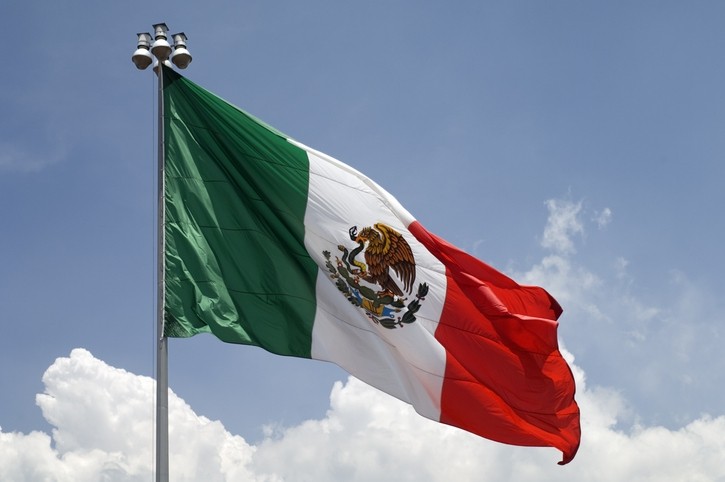Lower feed prices to bolster Mexican pork and beef output

The outlook pegs domestic beef production at nearly 1% higher from 2023, to a record 2.24 million metric tons (MMT). “Less drought in central and northern Mexico during the current year and less elevated grain prices are expected to support to herd development with impacts lasting through 2024.”
Demand for beef is also expected to expand slightly, according to the publication.
“The increase is based on population growth, coupled with a growing appetite for beef products as consumer incomes steadily rise over time and food price inflation moderates. The country’s tourism economy also continues to experience robust growth which in turn generates additional consumer demand in the hotel, restaurant and institutional (HRI) sectors,” noted the authors.
The outlook predicts that the country’s volume of beef imports for 2024 will be virtually unchanged from 2023, at 175,000 MT, due to the predicted hike in production.
Exports are forecast 1% higher from 2023 to 415,000 MT.
“Albeit a small portion of total supply, Mexico’s share of global beef exports continues to gradually increase. Between 2015 and 2022, Mexico has nearly doubled its amount of beef exports. Continued growth of slaughter facilities with the designation, Tipo Inspección Federal (TIF), point to the country having additional export capacity. The country’s main export markets are the US, Japan, Canada, and South Korea.
“Mexico aims to diversify its meat exports to meet demand for halal meat in North Africa, the Middle East, and Asia through cooperation among the Secretary of Agriculture and Rural Development (SADER) and halal certification bodies. Additionally, efforts to boost Mexican beef’s standing in the global market are made through national meat industry groups such as Comecarne and Mexican Beef.”
Live cattle exports
The USDA report predicts that Mexican cattle production will reach 8.7 million head, a 2% increase over the previous year, continuing a trend of steady growth over the past decade.
Cattle exports next year are forecast at 1.2m head, a 9% hike over the 2023 estimate of 1.1m head.
“Potential increased US demand from for feeder cattle from a shrinking 2024 US herd is forecast to boost live exports.”
The USDA team anticipates that Mexican live-cattle imports for 2024 will be 60,000 head, unchanged from the previous year, and largely only imported for herd genetic improvement.
Pork production
Mexico’s pork import volumes are forecast 3% higher from 2023 to 1.27 MMT, but short of the record import volume reached in 2022.
“The US, Japan, South Korea, and Canada are forecast to remain the most stable destinations for Mexican pork. With those countries' pork imports relatively stable, Mexico pork exporters may look to increase share in other export markets in Asia such as Singapore, Philippines, and Vietnam, and countries in Latin America such as Guatemala and El Salvador.”
Pork exports are forecast 2% higher in 2024 to 250,000 MT.
The authors expect that solid domestic demand for pork and pork products will support increased production from the domestic pork processing sector, to offset relatively less growth in pork export demand due global factors such as excess supply.
According to the country’s animal feed industry representatives, the domestic swine sector will likely use more than 6.6m MT of feed in 2023, 2% more than in 2022.
The USDA report sees some respite for producers in Mexico that are experiencing a decline in live hog prices in the form of lower corn prices. However, Mexico’s pig and feed producers say they face market uncertainty due to Mexico’s corn trade policy, following the presidential decree pledging the gradual substitution of genetically modified corn for animal feed and for human food.
Key beef and swine producing states
Seven states produce over half of the Mexico’s beef. The top five beef producers are the states of Veracruz, Jalisco, San Luis Potosi, Durango, and Baja California.
While hog production occurs throughout the country, national production and the total pig population is more concentrated in a handful of states than the country’s cattle herd.
Based on recent data, the states with the largest pig populations in Mexico are Jalisco, Sonora, Puebla, Veracruz, and Yucatan. Together they account for nearly 60% of the national pig herd, though pig production is also a major activity in other states of central and southern Mexico, reads the report.
US-Mexican trade
Despite current tensions over GM corn import policy, Mexico is likely to remain the top importer of US livestock and products in 2024, commented the authors.
They maintain that Mexico's positive economic growth trend over the last decade, the steady growth in consumption of beef and pork, a shared border yielding logistical advantages through proximity and shared infrastructure, and tariff-free market access through the US-Mexico-Canada Agreement (USMCA) will combine to continue positioning the US and Mexico as top mutual partners for livestock and products trade.
The authors noted, though, that Mexico is less than a year from general elections to select a replacement for current president, Andrés Manuel López Obrador, and that the Mexican livestock sector has flagged potential market uncertainty in regards to standards and regulations that any changes in administrations could bring during the pre-election run-up and forecast year.













